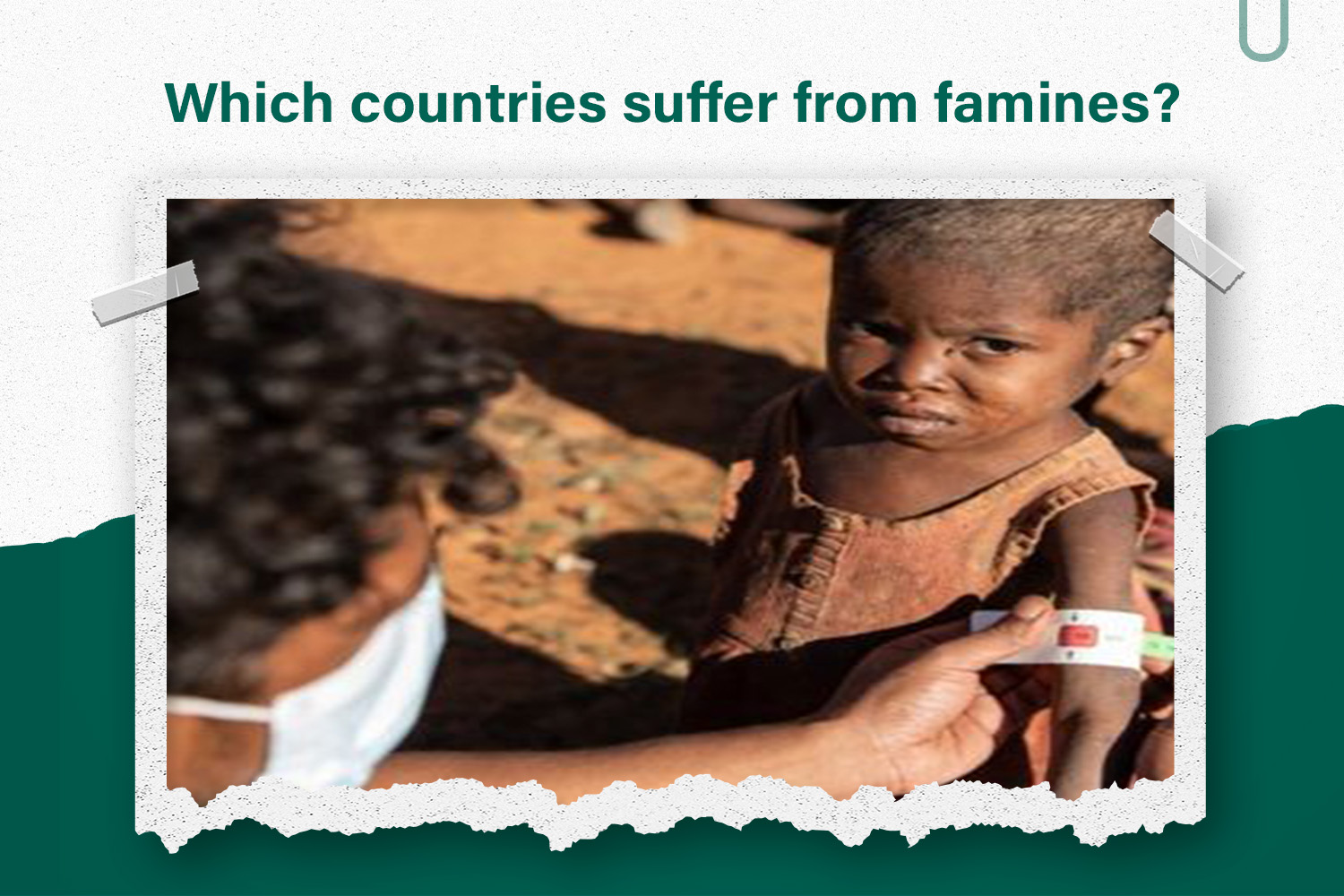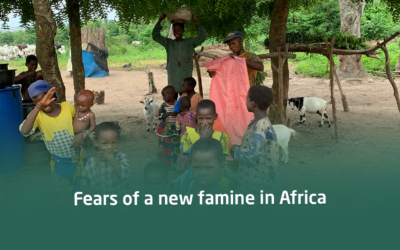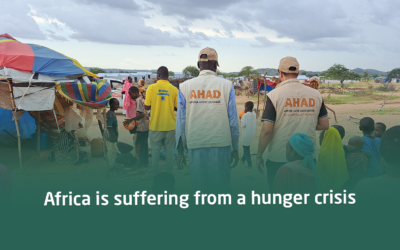Famines are the result of natural and human causes. Among the natural causes can be mentioned poor precipitation and a decrease in the amount of fresh water, climate fluctuations such as droughts and floods. Humanitarian causes include environmental changes, food insecurity, armed conflicts and inadequate agricultural infrastructure. Some countries in Africa, Asia, the Middle East and Latin America suffer from this particularly acute problem.
Causes of natural famines
Famines are the result of natural causes, including poor rainfall and lack of fresh water. Climate fluctuations such as droughts and floods also contribute to the occurrence of famines. These natural factors lead to a shortage of food resources and the degradation of cultivated land, which negatively affects agricultural production and increases the likelihood of famine in the affected countries.
Causes of human famines
The causes of humanitarian famines are one of the most important factors aggravating famines in the world. Among these causes are armed conflicts, lack of food security, deterioration of infrastructure, faltering economic development, high rates of poverty and unemployment. All these factors reduce the chances of sustainability and exacerbate food problems in the affected countries.
Africa
Many countries of Africa are experiencing serious famines. Malnutrition and lack of food resources in these countries cause a negative impact on public health and economic development. Extreme weather conditions related to droughts and floods cause crop degradation, infrastructure destruction and population displacement. The situation requires cooperation between local governments and international organizations to address this problem and provide the necessary health and food assistance to those affected.
Famines in Africa: cause and effect
Some countries of Africa are experiencing serious famines as a result of several reasons. One of the reasons is malnutrition and lack of food resources in those countries, which leads to deterioration of Public Health and economic development. Extreme weather conditions, such as droughts and floods, affect crops and infrastructure and cause population displacement. The situation requires cooperation between local governments and international organizations.
Countries suffering from famines in Africa
Some countries in Africa are experiencing serious famines. Among these countries are: Somalia, Sudan, South Sudan, northern Nigeria, Niger, Mali. These countries are exposed to difficult weather conditions such as drought and lack of water and agricultural resources, which leads to food shortages and nutritional deficiencies in these countries, thereby exacerbating the food crisis in them.

Asia
Asia is also experiencing some countries experiencing serious famines. Among these countries are: Afghanistan, Yemen, Syria, India, Pakistan. Common causes of famines in Asia come from adverse weather conditions such as floods and droughts, armed conflicts and wars that lead to population displacement and the destruction of infrastructure and resources. All these reasons lead to food shortages and the deterioration of the humanitarian situation in those countries.
Famines in Asia: cause and effect
Asia is experiencing some countries experiencing serious famines. The causes of famines in Asia include adverse weather conditions such as floods and droughts, armed conflicts and wars that lead to the displacement of the population and the destruction of infrastructure and resources. These reasons lead to food shortages and deterioration of the humanitarian situation in those states. Therefore, immediate action must be taken to address this problem and provide the necessary assistance to those affected.
Countries suffering from famines in Asia
Some countries in Asia are experiencing serious famines. Among these countries, we find Yemen, India, Afghanistan and Syria. These countries are suffering from deteriorating humanitarian conditions, food shortages due to adverse weather conditions and armed conflicts raging in these areas. The international communities should work to provide urgent assistance to these countries to mitigate and rehabilitate the impact of famines.
Middle East
Some countries of the Middle East are experiencing serious famines. This includes Yemen, Syria, Iraq and Iran. These famines are associated with multiple causes such as armed conflicts, lack of Water Resources and low agricultural production. Famines in these countries are becoming more acute due to the deterioration of the security and economic situation, which leads to high food prices and difficult access to basic food. These countries need the support of the international community in providing urgent assistance and reconstruction of agricultural infrastructure to alleviate famines and improve the living conditions of local residents.
Famines in the Middle East: cause and effect
Some countries in the Middle East are experiencing serious famines, for various reasons. These reasons include armed conflicts, lack of Water Resources and low agricultural production. These famines exacerbate the security and economic situation in those countries, and make it more difficult to access basic food. The international community must urgently provide support and assistance in the reconstruction of agricultural infrastructure to improve conditions in the Middle East.
Countries suffering from famines in the Middle East
Some countries in the Middle East are experiencing serious famines. Yemen, Syria, Iraq and Sudan are among the most affected countries. Residents of these countries are faced with an acute shortage of food and water, which negatively affects their life and well-being. Famines threaten the daily lives of individuals and increase the level of poverty and homelessness in those countries. The fight against these famines requires joint efforts of the international community to provide humanitarian assistance, financial support and the necessary resources to revive the agricultural infrastructure and improve the food situation in the Middle East.

Latin America
Latin America is faced with the problem of famines, as some countries are experiencing severe shortages of food and water. These countries include Honduras, Guatemala, Haiti and Venezuela. Natural factors such as droughts and floods cause famines, while poor economic conditions and the lack of proper investment in agricultural infrastructure exacerbate the problem. The solution requires international cooperation and joint efforts to provide humanitarian assistance and promote agricultural development in these areas to reduce famines and improve the conditions of affected individuals and communities.
Famines in Latin America: cause and effect
Latin America is faced with the problem of famines due to natural factors such as droughts and floods. These natural phenomena cause a shortage of food and water in countries such as Honduras, Guatemala, Haiti and Venezuela. The problem is aggravated by poor economic conditions and the lack of proper investment in agricultural infrastructure. These famines affect affected individuals and communities, as they suffer from undernutrition and high rates of hunger and poverty. In order to reduce famines and improve the situation, the countries concerned and the international community should cooperate to provide humanitarian assistance and promote development in these areas.
Countries suffering from famines in Latin America
Several countries in Latin America are facing the problem of famines, with Honduras, Guatemala, Haiti and Venezuela experiencing severe food and water shortages. The reason is attributed to natural phenomena such as droughts and floods, as well as difficult economic conditions. These famines affect the population significantly, which leads to high rates of hunger and poverty in these countries.
Socio-economic impact of famines
Famines cause significant social and economic impacts on the affected countries. At the economic level, famines cause a decrease in agricultural production and a decrease in national income, which leads to an increase in poverty rates. In terms of social impact, famines cause the spread of diseases, high mortality rates and diseases caused by malnutrition. Famines also lead to increased displacement and the disintegration of families and communities.
The impact of famines on individuals and communities
Famines cause a huge impact on individuals and communities. Affected individuals are exposed to a lack of food and malnutrition, which leads to an increase in deaths and illnesses. The society also suffers from the disintegration of families and social unrest, which affects stability and economic growth. In addition, displacements and loss of patriotism are increasing, causing outbreaks of conflicts and social tensions in the affected areas.
Possible solutions to overcome famines
Several measures can be taken to overcome famines. Among these solutions include the promotion of sustainable agriculture, improving the infrastructure of Agriculture and providing financial resources to farmers. Awareness of healthy nutrition and the provision of basic health services to affected individuals should also be promoted. By implementing these solutions, the impacts of famines can be reduced and food sustainability promoted in affected communities.
Visit the ahad website to see the projects it offers
Related articles:
Improving the quality of education in Africa




